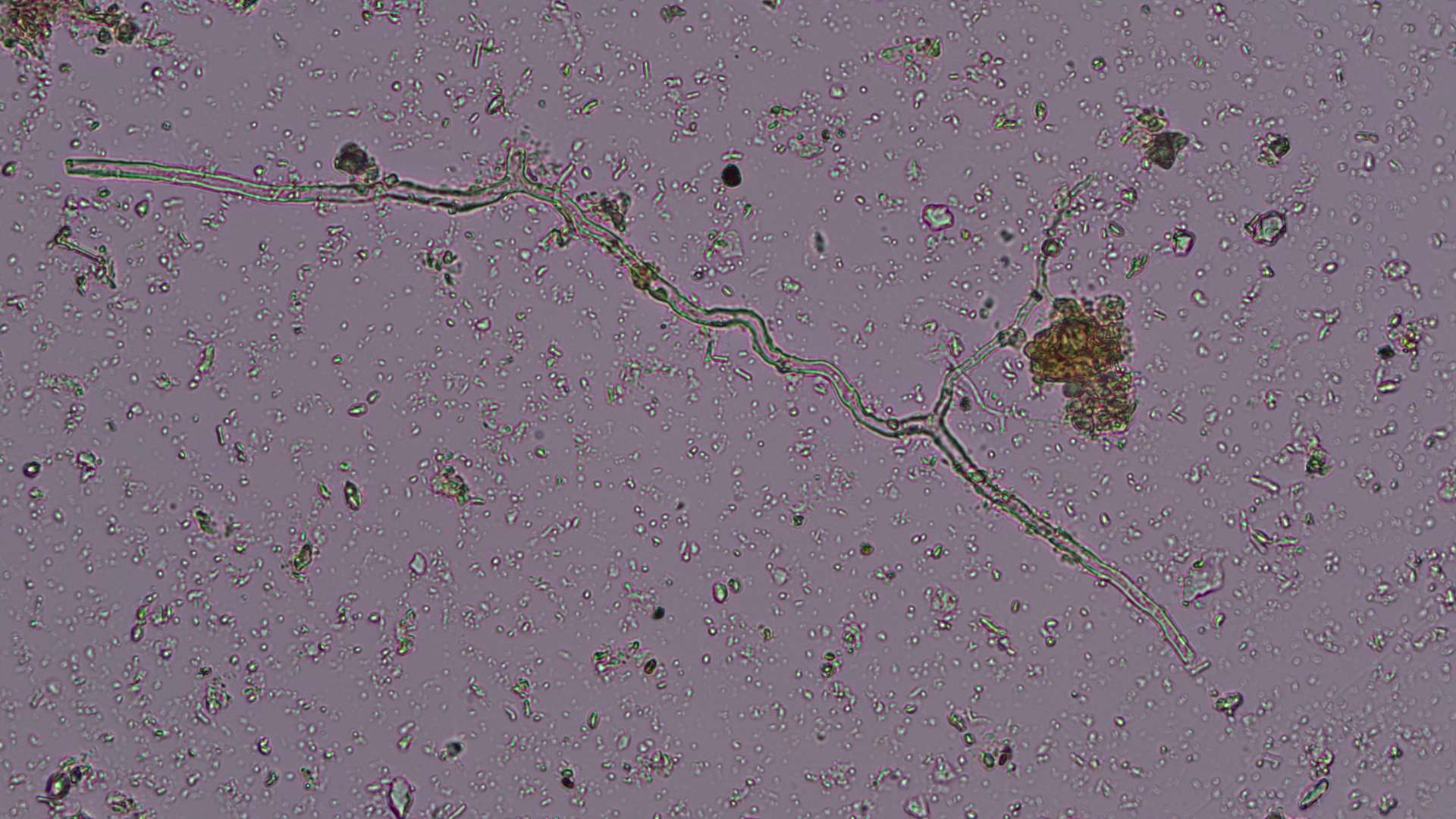
Fungi are very important to the Soil Food Web. Fungal hyphae work with plants to provide nutrients and water in exchange for exudates. Exudates are liquids produced by plant roots to feed beneficial microbes. Many plants cannot grow well without fungal partners. Fungi also help sequester carbon in the soil. They build soil structure. More reading: Australian National Herbarium
More reading: Australian National Herbarium
Rather watch a video?: Dr. Adam Cobb on Fungi

Good soils contain nematodes. Usually nematodes can be broken down into five main groups: bacteria feeders, fungal feeders, root feeders, predatory (they eat other nematodes), and omnivores. The only ones you don't want are the root feeders. With good soil conditions the root feeding nematodes cannot thrive.
More reading: USDA Nematode Article by Dr. Elaine Ingham
Rather see a video?: Journey to the Microcosmos Nematodes

Protozoa are single celled animals and primarily feed on bacteria. Usually for soil biology assessments we count three groups: flagellates, amoeba, and ciliates. Protozoa are great for soil nutrient cycling and for keeping bacteria populations in check.
More reading: USDA Soil Protozoa Article by Dr. Elaine Ingham
Rather see a video?: K TheGuy’s Youtube video on Protozoa
Actinobacteria are long strands of bacteria that live in the soil. They look a lot like a hair, but are only 1 to 1.5 micrometers wide. Actinobacteria sometimes put out chemicals to deter fungal growth, and are great allies of certain vegetable species such as Brassicas, cole, and kale that are found in the earlier successional stages. These plant families do not partner well with fungi, so compost or soil with more actinobacteria are beneficial to them.